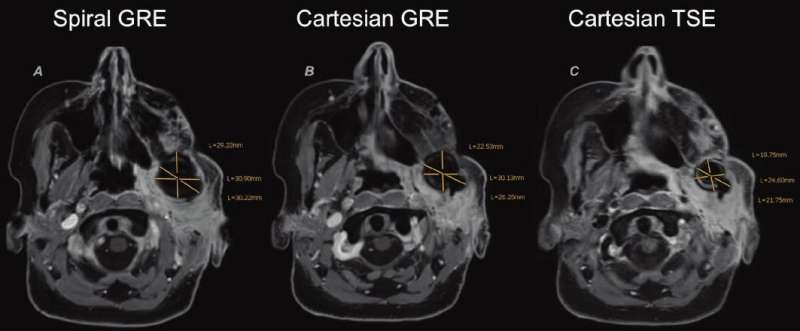
According to an open-access Editor’s Choice article in the American Journal of Roentgenology (AJR), a 3D spiral gradient recalled echo (GRE) sequence could help conquer certain challenges of conventional Cartesian sequences for head and neck MRI.
“3D spiral GRE improves subjective image quality and contrast-to-noise ratio (CNR) of head and neck MRI with shorter scan time versus Cartesian sequences, though exhibits larger dental material artifact,” wrote corresponding author Sabine Sartoretti-Schefer from the Institute of Radiology at Kantonsspital Winterthur in Switzerland.
From August 2020 to May 2021, Sartoretti-Schefer and team prospectively studied patients referred for contrast-enhanced head and neck MRI. Patients underwent 1.5-T MRI (Ingenia; Philips Healthcare, Best, the Netherlands), including contrast-enhanced [Gadovist (Gadobutrol) 1.0 mmol/mL, Bayer HealthCare Pharmaceuticals, 0.1 mL/kg body weight] spiral GRE (2:28 min), Cartesian GRE (4:27 min), and Cartesian turbo spin echo (TSE) (3:41 min) sequences, acquired in rotating order to mitigate bias.
Among 31 patients (13 male, 18 female; mean age, 63.8 years) who underwent head and neck MRI, spiral GRE, compared with Cartesian GRE and Cartesian TSE, achieved improved image quality for numerous subjective measures for three independent readers and improved CNR, with 33.0%–44.6% reduced scan time. However, maximal extent of dental material artifact was greatest for spiral GRE.
Source: Read Full Article
